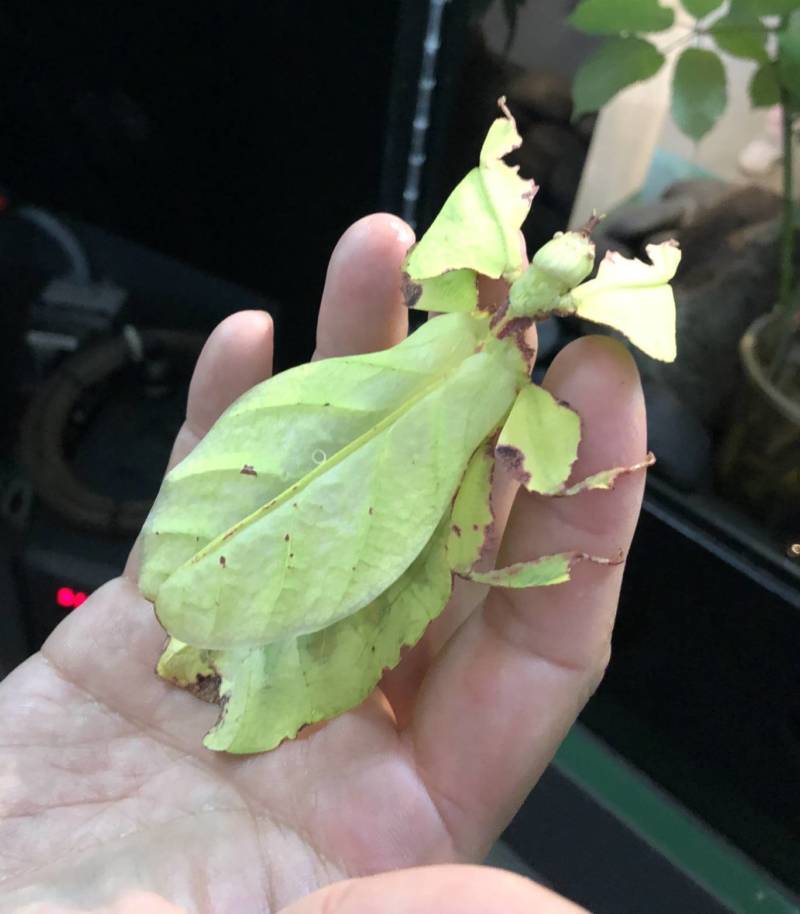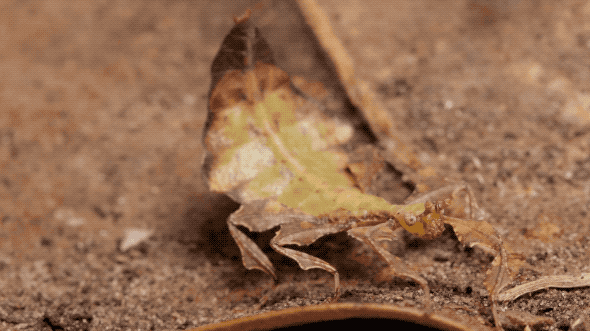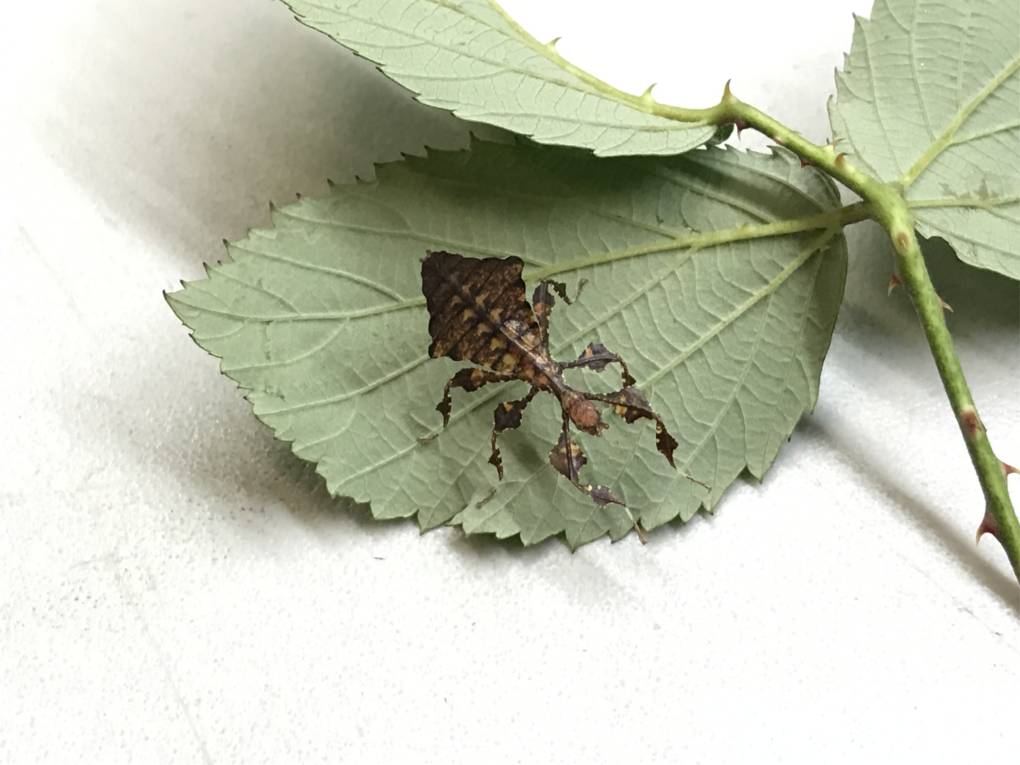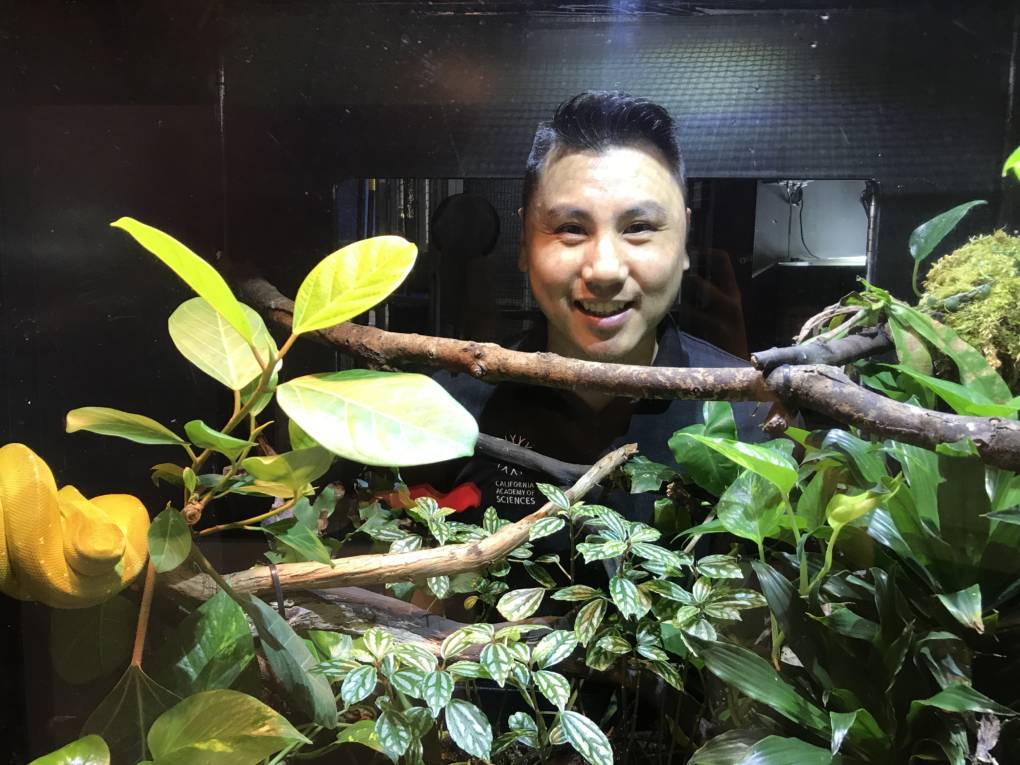These Giant Leaf Insects Will Sway Your Heart
You’ll have to look closely to spot a giant Malaysian leaf insect when it’s nibbling on the leaves of a guava or mango tree. These herbivores blend in seamlessly with their surroundings because they look exactly like their favorite food: fruit leaves.

But you can definitely see these fascinating creatures at the California Academy of Sciences, located in the heart of San Francisco’s Golden Gate Park, through the spring of 2022.
An ongoing interactive exhibit,”Color of Life,“explores the role of color in the natural world. It’s filled with a variety of critters, including Gouldian finches, green tree pythons, Riggenbach’s reed frogs and, of course, giant leaf insects.
“Evolution is really amazing,” said Patrick Lee, one of the museum’s animal care managers who oversees the care and feeding of 38,000 live animals.”It’s allowed this species to use cryptic mimicry as their anti-predation strategy.”
“Cryptic mimicry” might sound like a magic trick. But it’s the ability of animals to conceal themselves. Also known as camouflage, the feature allows the leaf insects to use two different techniques: crypsis and protective resemblance.
Crypsis refers to an insect’s color and how much it looks like its habitat, while protective resemblance describes insects that resemble a natural object such as a stick, stone or, in this case, a large leaf.
Like large leaves, the leaf insects usually stay very, very still to avoid attracting any predators’ attention. Moving can be the most critical mistake this insect can make. But if they must move, they move very slowly — or use a clever strategy.

“If these insects are caught in a breeze, they’ll even sway back and forth along with the surrounding foliage to enhance their disguise,” Lee said.
But giant leaf insects don’t start off looking like fresh green leaves. Their appearance adapts over time to match their surroundings, so their camouflage is ever-evolving, like their living natural habitat.
Females remain hidden in the trees and drop eggs to the forest floor. The eggs look like small brown seeds that blend in well with the decaying leaf litter. After the nymphs emerge within two or three weeks, they remain brown and scurry around, perhaps mimicking tropical ants.
While some amateur entomologists try to raise them privately, you can’t buy them commercially in the United States.
“They’re not available as pets and are regulated by the USDA,” Lee said. “You must have a permit in order to display and house this species.”

Lee breeds them. About two dozen eggs hatch every four to five months. The young insects live in the museum’s special USDA insect-rearing room. This ensures the museum has a healthy community of insects to display to the public and to keep a backup population on hand. In the past, if the museum has had extra eggs or young nymphs, staff members have sent them to other zoos and aquariums throughout the country.
The main challenge in keeping them alive is having a steady supply of good blackberry leaves readily available to eat, Lee said. Otherwise, “they may nibble on their roommate – which incidentally resembles a leaf,” he said.
In order to prevent “accidental cannibalism,” only a few are kept together at one time. Nymphs are raised individually in small plastic containers, while the adults are housed together in tall terrariums.
While most of the time there are plenty of local blackberry leaves available for meals, it becomes more challenging in warmer months.
“During the summer, when blackberry bushes die due to the heat, it becomes a bit more difficult to gather fresh leaves in Golden Gate Park,” Lee said.
He also keeps the insects’ habitats at a high humidity, so that they’ll successfully molt, or shed their exoskeletons, as they mature.
Once they’ve turned green — which usually takes a week from the point they’ve hatched from the eggs — they ascend into the trees to match their leafy environment. They simulate the leaves’ appearance with their wide, flat bodies and specific traits like their texture, spots and “veins.” And as they grow older, they get bigger and even develop frayed brown edges to resemble damaged leaves.

Lee maintains a busy schedule. Along with checking in with all of the animals that are a part of the “Color of Life” exhibit, he’s also in charge of the museum’s large freshwater fish habitats and “ambassador animals,” or education animals, that are a part of the museum’s interpretive programs.
But even with this heavy workload, Lee said he finds his job incredibly rewarding.
“There’s nothing like coming to work every day,” he said, “to a facility and a collection of live animals that you truly love.”
